Roma: Another word for Amor
Skip other details (including permanent urls, DOI, citation information)
: This work is licensed under a Creative Commons Attribution-NonCommercial-NoDerivatives 4.0 International License. Please contact [email protected] to use this work in a way not covered by the license.
For more information, read Michigan Publishing's access and usage policy.
The first striking feature of Alfonso Cuarón Orozco’s 2018 black-and-white hit, Roma is its lighting. The opening titles are superimposed over granite tiles being washed down. The contrast between the water and the tiles gives the film image a lively texture as the introductory credits fade in and out of the screen. The subject of the movie is the woman washing the tiles, Cleo (played by Yalitza Aparicio, after Cuarón’s year-long hunt for the right actress).
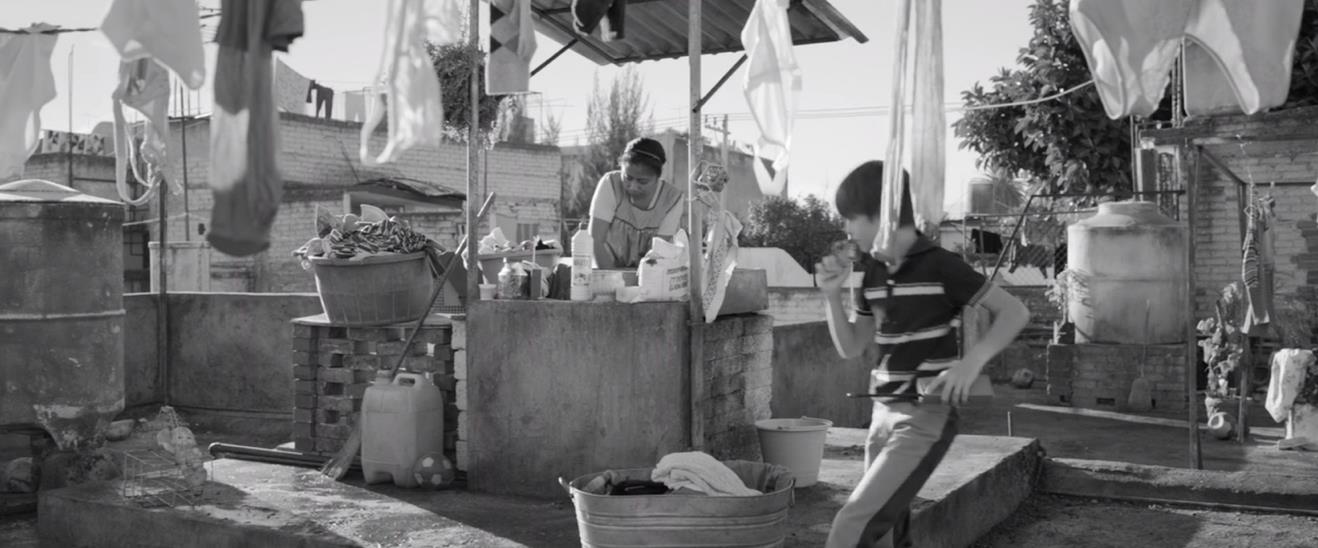
Aparicio’s role is that of a sweet, innocent, somewhat shy teenage housekeeper. Accompanied by her friend Adela (Nancy Garcia), she helps a tormented mother keep order in a large house in Mexico City’s densely populated Colonia Roma suburb in 1970. Marina de Tavira is Senora Sofia, an attractive, thirty-something woman whose husband (Fernando Gregiada) is a philandering doctor who leaves for business trips to “Quebec,” or at least that’s what he tells his wife. What appears to be a happy family with four children, two maids and a dog awaits a sad turn.
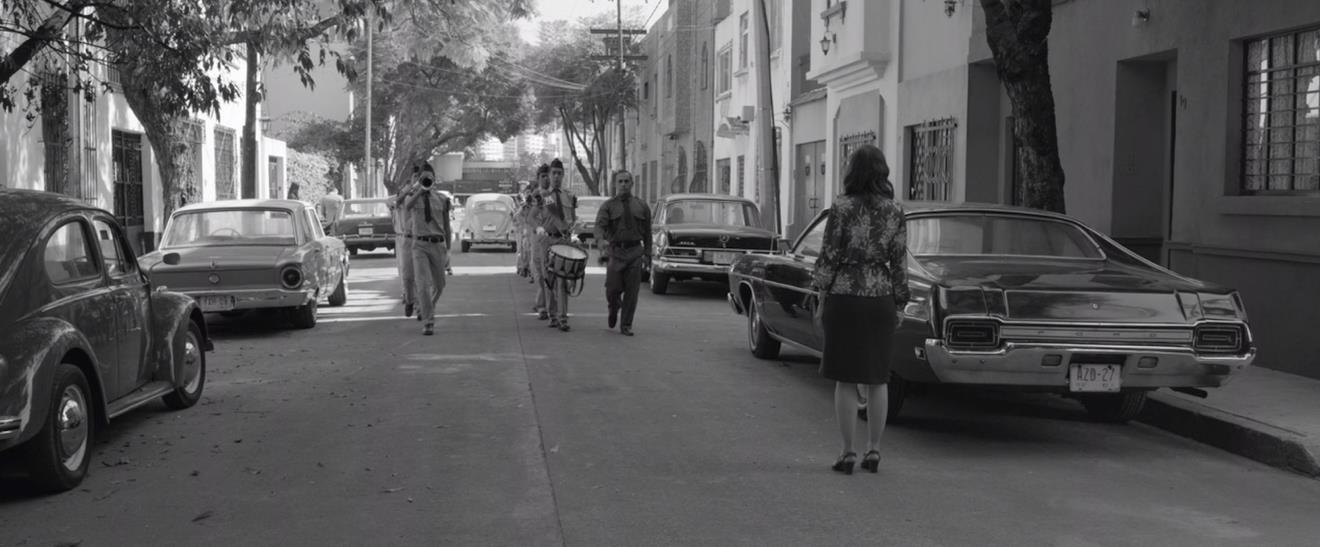
Tavira’s shining performance is reminiscent of Gena Rowlands’ in John Cassavetes’ A Woman Under the Influence (1974), as she desperately tries to keep her life together, melts down, and then proceeds to reassemble her sanity. Cleo and Adela care for the children with the help of their abuelita (Veronica Garcia). While Tavira’s and Rowlands’ characters meet different fates, in both movies the husbands aggravate matters, leaving wives and grandmothers (and maids) to provide the extra support.
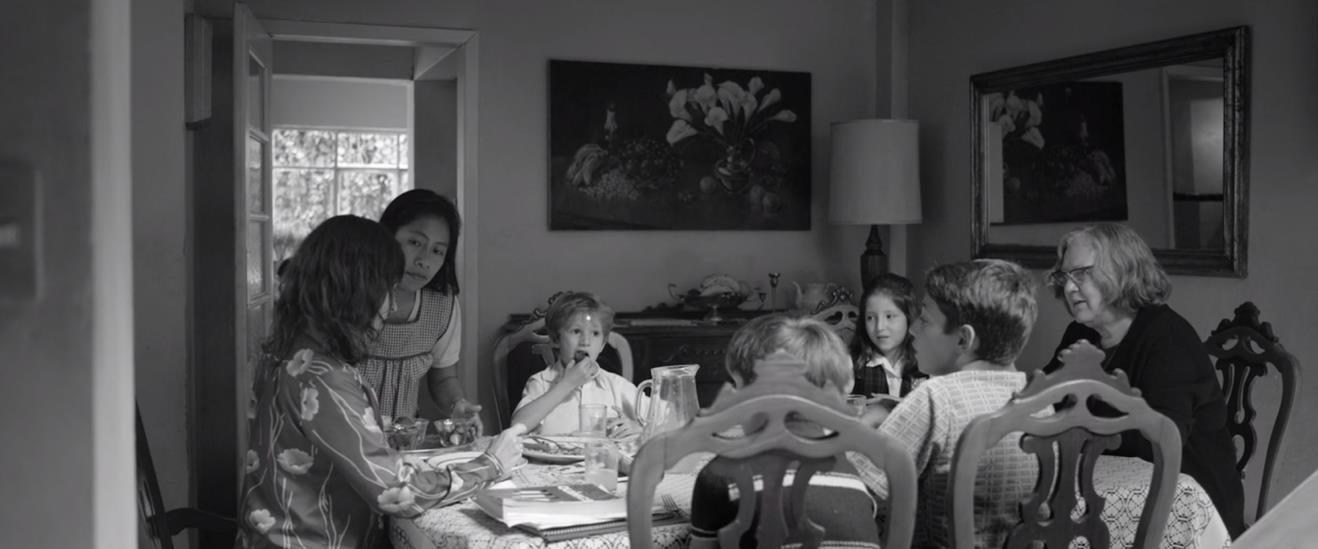
Cuarón is not the first to use black and white to his advantage: In Peter Bogdanovich’s Paper Moon (1973), a Depression-era rite of passage is experienced by a street-smart child (Tatum O’Neil) on the road with her father (Ryan O’Neil, her real father), a grifter. Like Roma, it pits the desires of adults against the basic needs of children and forces their respective single parents to own up to their responsibilities. The Last Picture Show is another film where Bogdanovich’s characters grow up and learn hard lessons, this time in a small Texas town over the period of one high school football season.
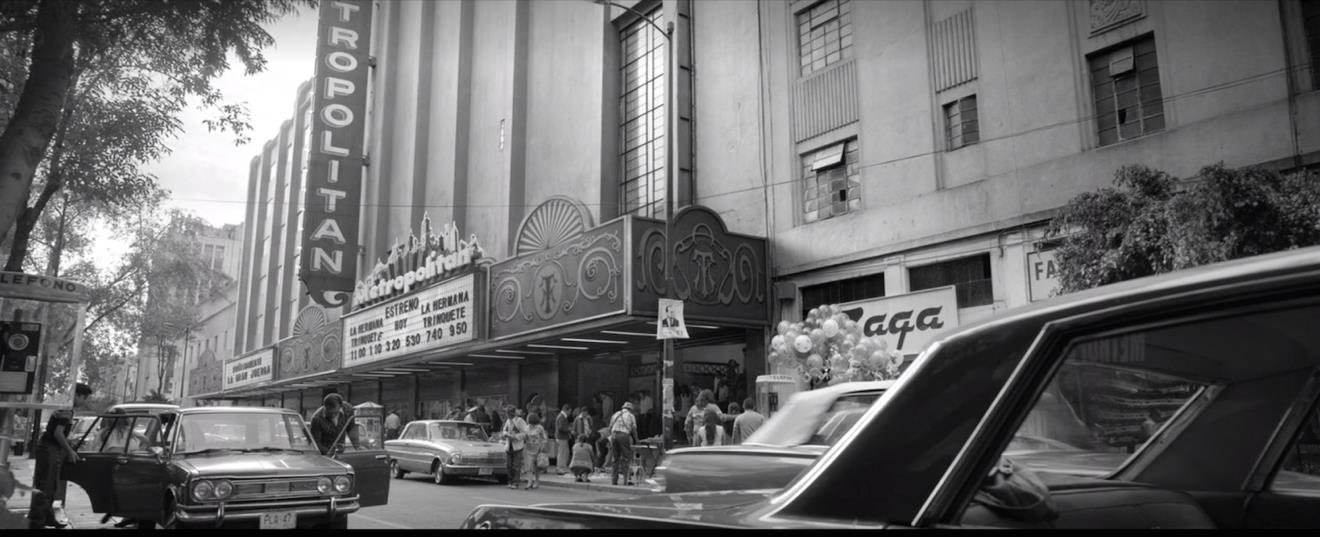
When one looks at popular independent U.S films of the 1970s it is easy to cite numerous “coming-of-age” works. Examples include The Teacher (1974), Sounder (1972) and Aaron Loves Angela (1975). Larger-scale movies of this genre include Going Home (1971), American Graffiti (1973), Big Wednesday (1978), Breaking Away (1979), and movies signifying Hollywood’s reaction to Vietnam: Tribes (1970), The Deer Hunter (1978) and Coming Home (1978).
An interesting parallel with American cinema develops: After Cleo is abandoned by a boyfriend who impregnates her, she tries to conceal her condition. Sofia discovers Cleo’s secret, takes her to pre-natal checkups, and even sets up a room in the house for the future baby. Both women, having been deceived by men, provide support for each other. Similar to Douglas Sirk’s version of Imitation of Life (1959), the movie is complete with a maid/nanny, empowered females from differing backgrounds and a beach scene crucial to the story.
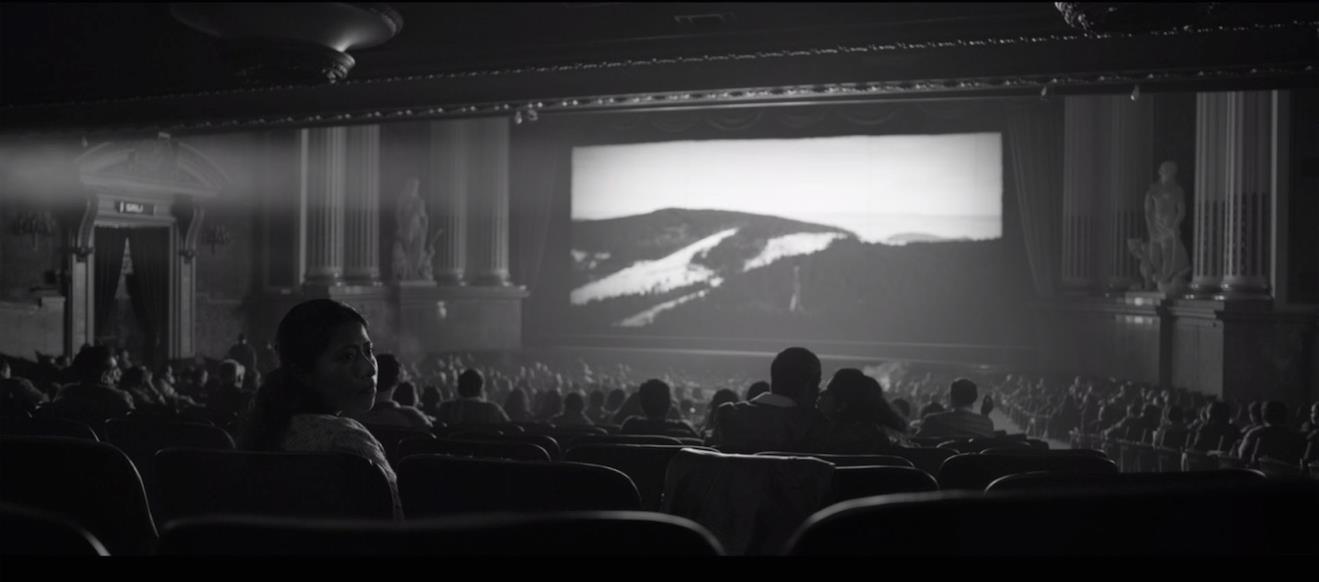
Set in Mexico City in 1970, Roma contains several comic scenes, including one in which Cleo is reclining in a hotel room bed, watching lovingly as her boyfriend, Fermin (Jorge Antonio Guerrero), removes a shower curtain rod and practices martial arts forms with it, naked. More humor lies in the gated carport at the family home: The dog chooses it as a place to defecate. Both the senor and senora have difficulty navigating their Ford Galaxie through the small space, especially after a few drinks. The camera spares no detail in displaying the crunch of metal against concrete, as well as dog dung being squashed under tires.

Cinematography (by Cuarón himself) and the use of contrast are again quite evident in a scene in the muddy barrio of Pamplona, amid propaganda for President Alvarez and campaign signs for Mayor Gonzalez. People navigate through muddy fields while a human cannonball entertains in the background – indeed a circus atmosphere – as Cleo attempts to find Fermin.
The squalor, the lean-tos, the kids running – oblivious to the filth, along with a garage band (without the garage) – all are elements important to the realism of the film. A great orchestration of people was needed in order to recreate the director’s vision of Loma Colorada (then – and now – one of many densely populated areas northwest of Mexico City.
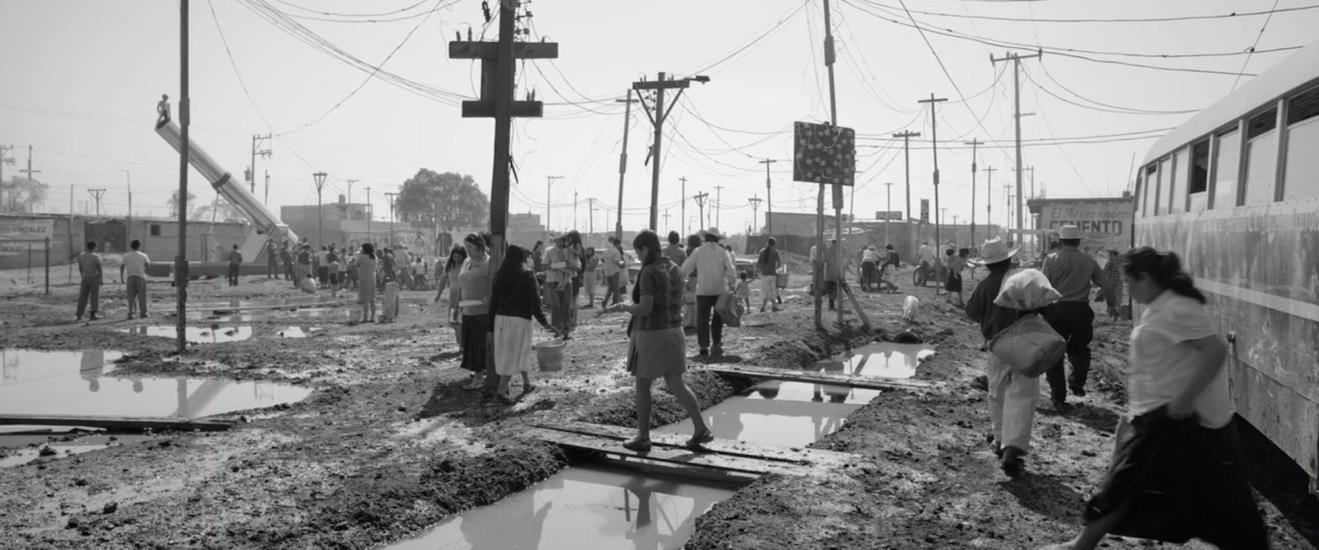
Two events – needing even thousands more film workers - are thrown into the story. The Corpus Christi Massacre of 1971 was a brutal terror attack. In Roma, Cleo and the grandmother take refuge in a store where people are shot. The film’s characters are spared by Fermin, who happens to be one of the terrorists. Another scene requiring massive coordination involves a forest fire and villagers applying a bucket brigade to extinguish it.
In these scenes imaging the texture of excrement, we witness tormented patients at a hospital after a massacre, a dead child, and the reality of the poor. Cuarón’s film invokes Luis Bunuel as his spiritual traveler. In the latter’s disturbing , but masterful Los Olivados (The Young and the Damned), Roma’s Fermin is represented by Jaibo, a Fagin whose young disciples prey on the disabled (not unlike Malcolm McDowell’s Alex, along with his “droogs” in Kubrick’s A Clockwork Orange).
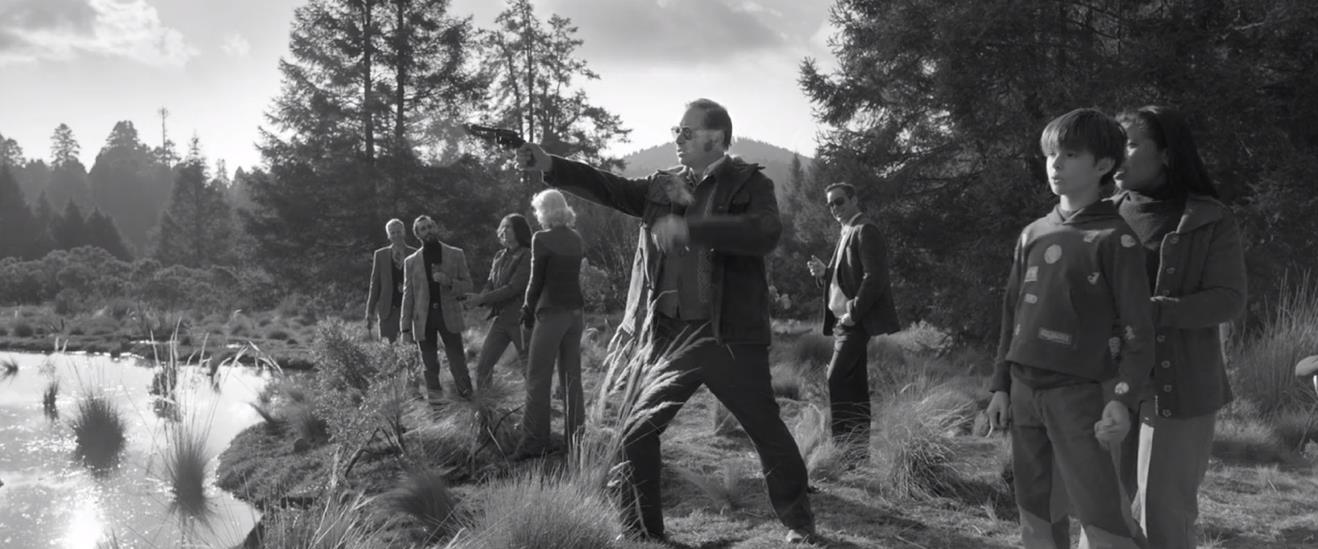
Bunuel appears to have predicted the plight of disaffected youth in this film and the “depressed” sections of the city depicted in Roma. Like Cuarón, Bunuel was a risk-taker who sought to bring to light what directors before had only kept in darkness. How often do we really see feces – or want to – in the movies? Realists, and the Surrealists beyond them, demand that we look, even when we cannot smell.
But Cuarón cleverly mixes such art cinema with popular media. La Grande Vadrouille (“Don’t Look Now”), a movie about the Second World War provides the backdrop for the scene in the theater where Cleo is abandoned. One afternoon, the family watches a popular American sci-fi movie, Marooned, just before Sofia observes her husband with another woman. Could the 1969 movie – about stranded astronauts – represent Sofia’s feelings about her family? Icons Woody Woodpecker and Porky Pig appear on television screens in Cuarón’s film. The soundtrack features artists such as Juan Gabriel, Roger Whittaker, Yvonne Elliman, and Los Babys.
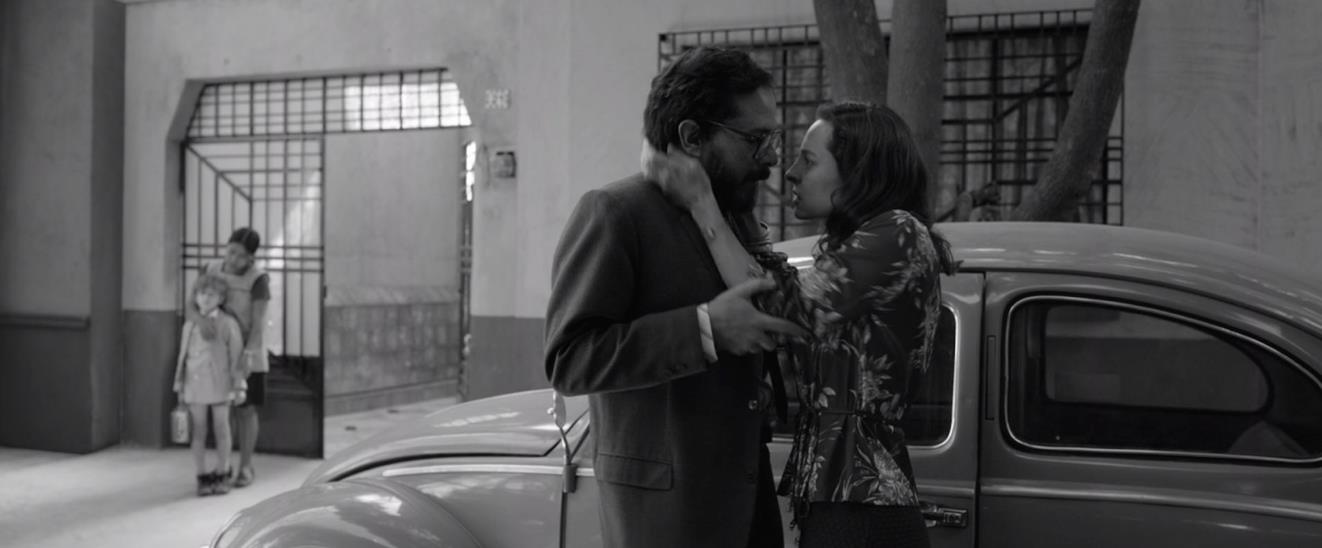
Roma incorporates imagery similar to that found in Mexican tabloids of its era: Newspapers such as Alerta and Alarma were infamous in their shock value, with graphic depictions of accident scenes, dead bodies and headless corpses, catering to a society that was unfamiliar with American media.
Roma’s climax occurs when Sofia, the children, and Cleo attempt to enjoy a quiet afternoon at the beach. The scene consists of a distracted mother, the typically turbulent Mexican surf, a housekeeper who doesn’t know how to swim, and wandering kids. The main character acts valiantly, true to form (though, surprisingly, with children in peril in the water, no nearby beachgoers attempt to help). With unyielding camerawork, Cuarón captures the tragic event without a cut.

Cuarón has an eclectic resume; his seven previous films include Harry Potter and the Prisoner of Azkaban (2004), Children of Men (2007), and Gravity (2013). Roma is somewhat similar to his 2001 effort, the narrative Y Tu Mama Tambien (starring Gael Garcia Bernal). Both films are coming-of-age dramas, shot in in Mexican locations, featuring characters emitting their dialog in blunt language.
Roma serves as a wistful recollection done very effectively. Its black-and-white scheme makes shadows more pronounced, and the director’s use of lengthy stills and slow pans gives one time to absorb and process what is happening. The mise-en-scene also affords those familiar with or curious about the era to study the backdrop, the props and the environment.
An acquaintance of mine lived in Mexico during the era depicted in the film. She observed that the protagonist was fortunate to have obtained a job, a home – and most importantly – an adoptive, supporting family. She added that the film could have easily been called “Cleo,” and that the film’s title spelled backwards is “Amor.”
The reversal is remarkable because it leads us away from Italian Neo-Realism and toward Mexican telenovelas and especially Hollywood cinema, a milieu with which Cuarón is a great success, compared to Bunuel, Cassavetes, and the other independent, international art cinema with which critics are more comfortable.
Cuarón does something with his main character that many otherwise great movies do not: he gives her a soul; he gives the audience the desire for her to succeed, to live and to do good for others. Through hardship, violence, and heartbreak he uses the strength of his characters to draw one deeper into the story, and as with any successful telenovela, the viewer is left wanting more.
Roma ends as it begins, with its main character performing her primary role in the household. She cleans. Cuarón presents the simple message that life will go on, despite tragedy, and that, perhaps, one can be made stronger as a result of having lived through it. The film (clearly semi-autobiographical) is also a fitting tribute to a woman who was a very important and memorable part of its creator’s formative years.
Author Biography
J. Henry (“Jim”) Harrison is currently a freelance writer and former political tracker. A native of Southern California, he is also a cinephile, a voice artist, and a vocalist with over 600 You Tube videos.


